Black Mold FAQs
Are All Black Molds Toxic?
No, not all black mold is toxic. There are thousands of different species of this fungi worldwide and at least a thousand different species of black mold found in the United States.
A large percent of black mold is relatively harmless to humans but many types of toxic and non-toxic black mold lookalike which is why it is important to hire mold specialists to test and remove mold in your home.
What is Black Mold?
Black mold is a slimy, greenish-black fungus scientifically referred to as Strachybotrys and has been “linked to the death of babies from respiratory bleeding (pulmonary hemosiderosis), and as a contributing factor to illnesses such as bronchitis and asthma.”
Dangerous black molds produce airborne mycotoxins that can irreversibly destroy a person’s health. It is possible to breath in mold spores and mycotoxins without being aware that you are getting really sick. Being exposed to dangerous molds over a long period of time can cause serious symptoms and illnesses such as respiratory disorders, learning disabilities, mental deficiencies, heart problems, cancer, multiple sclerosis, chronic fatigue, rheumatoid arthritis, a suppressed immune system and more.
Does Black Mold Have a Smell?
Yes, black mold does have a distinctive odor that favors a mildew and very musty odor.
What is Toxic Black Mold?
Toxic black mold or Stachybotrys Atra (also known as Stachybotrys chartarum) is a species of mold that you may have heard of most often. It is the type of black mold that is most publized by the media.
This type of black mold can be dangerous and threaten the heatlh and welfare of humans and pets who come into contact with the mycotoxins that several of these species produce. Health issues stemming from toxic black mold can be ampified in infants, the elderly and anyone suffering from an upper respiratory illness.
Can Toxic Black Mold Kill You?
Yes. This type of mold can be deadly if it is allowed to grow unrestrained.
Where Does Toxic Black Mold Grow?
Toxic black mold thrives in indoor and outdoor environments. Outside this type of mold grows in the soil and helps break down organic substances like dead leaves and tree limbs. Inside, this toxic fungi thrives in warm and moist areas that are low in nitrogen and high in cellulose.
You can find toxic black mold in:
- Carpet
- Drywall
- Drop-down ceiling tiles
- Wood paneling
When these items get wet and remain in this condition for an extended period of time the moistured weakened areas are primed for mold growth. While you may not always be able to see this type of mold, it does have a strong odor to indicate its presence.
What Should I Do If I Think I Have Toxic Black Mold in My Home?
Immediately hire a company who specializes in mold testing to confirm that mold is located in your home. Once it is confirmed that you have mold present, you need to make sure it is safely and quickly removed. A mold remediation company is best suited to take care of this for you to ensure all of the mold is removed from the home and educate you on preventative measures for minimizing your risk of mold returning.
What Sets Us Apart
- Free Estimates
- In-Home Evaluations
- Fast, Affordable, Reliable Service
- 15% Off Any Service (New Customers)
- Super Fast Response Time
- 40+ Years of Experience
- Licensed and Mold Certified
- No Mess Guarantee
- Lifetime Waterproofing Guarantee
- We Do It Right the First Time
- Featured on News 12 & Newsday
- No Job Too Big or Too Small
- Locally Owned & Operated
- Most Jobs Completed Same Day



